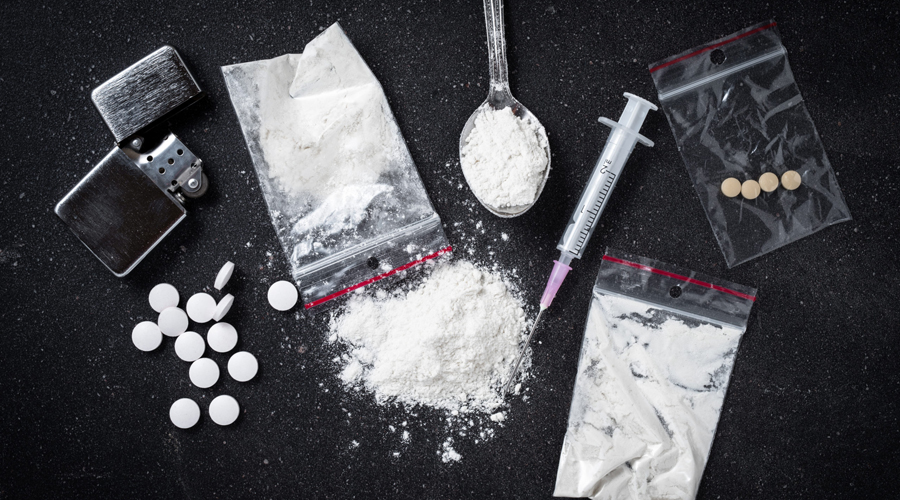When you or someone you care about suffers from addiction to drugs, they may start to take more than one drug. For example, they may suffer from an alcohol dependence disorder and then begin experimenting with various drugs only to develop the habit of using one or several substances. In the event that someone uses multiple substances they’re diagnosed with polysubstance dependence, commonly labeled “polysubstance misuse.” If you really want to overcome alcohol abuse, Alcohol Rehab Places Seattle has a chain of Alcohol Rehab Treatment Centers in Seattle, Washington with certified and experienced medical staff to guide and take care of you at every step of recovery.
What Is Polysubstance Abuse?
Polysubstance abuse is not an official term in the field of medicine since the term was eliminated from the DSM-5 – the Diagnostic and Statistical Manual of Mental Disorders. The word “abuse” is what makes this condition seem more like a decision of the person, not the diagnosis of a medical disorder. As such, this condition is now known as polysubstance dependence or use instead of polysubstance abuse.
What Is Polysubstance Dependence?
Polysubstance dependence is where someone uses multiple substances simultaneously to enhance the effects of one or more substances whether intentionally or not. In addition, the person does not have to be chemically dependent on any of the multiple substances they are misusing.
But, certain people may prefer a specific substance, which they use in conjunction with another substance in some situations. To be considered a polysubstance dependent person, one has to use multiple substances for a prolonged period.
There is some debate about how long various substances are required to be used. Certain facilities deal with polysubstance use disorders that involve multiple substances being used for any period. Other facilities have a wider definition in which the patient must use multiple substances for a minimum of 12 months.
What is the most common way that someone can accidentally misuse Multiple Substance?
Polysubstance misuse is the act of an individual abuses a variety of substances that are cut by other substances. For example street fentanyl can be cut using an opioid or heroin to increase its potency than prescription fentanyl. However, the user of the street fentanyl usually does not know of the fact that it was made using multiple substances.
Risk Factors
The most well-known risks of polysubstance dependence can include:
Genetics and Family
When someone in the immediate household is dependent on multiple substances, they are at a higher risk of other family members developing a substance-use disorder and dependence on multiple substances. If you have been convicted of alcohol abuse in Seattle, Washington, you may be required to take a 26 Week Alcohol Treatment Program at Alcohol Rehab Places Seattle. Their 26-week Alcohol Treatment Program in Seattle is designed for those who have a more extensive history of alcohol use and/or legal running consequences due to their drinking habits.
Adolescent and Young Adults
If young adults and teenagers are trying out alcohol and drugs, they could receive a mix of drugs to test. If they are satisfied with the results they experience, there’s the possibility that they’ll continue to mix those substances to experience similar effects again.
Tolerance
Once a person develops an aversion to the substance they prefer it is possible to switch to different substances to increase the effects. This can result in more lasting or intense experiences. In addition, the body will continue to develop tolerance to each substance being used.
Mental Health
Being afflicted by a mental health condition is another risk factor for polysubstance abuse disorder. Many people use alcohol or drugs to self-medicate because they are not confident enough to seek treatment for their mental health disorder. In reality, they find that mixing several substances may be more effective in easing their symptoms instead of using a single drug.
Risques of Polysubstance Dependence
All disorders of substance use are linked to severe and adverse consequences. When a person is using multiple substances, the risks increase since multiple substances are being used simultaneously.
Some of the more common side effects are:
- Slowed or increased heart rate
- Increased or decreased blood pressure
- Troubles with Breathing
- Memory and concentration problems
- Black Outs
- Lack of Coordination
- Vomiting
- Nausea
- Headaches
- Pain and aches in the body
The longer the duration of polysubstance usage continues, and the doses of the substances rise The most extreme side effects are:
- Accidental Overdose
- Coma
- Respiratory Failure
- Heart Attack/Heart Failure
- Death
- Deteriorating Mental Health
- Lowered Immune System
- Increase in Infections/Diseases
Drugs commonly used together
Although alcohol is one of the most frequently used substances along with other substances. Other substances that are commonly used together include:
Benzos (Benzodiazepine) as well as Opioids
Benzos, such as Xanax, Valium, or Klonopin are extremely dangerous when mixed with opioids such as heroin, fentanyl or Oxycodone. They both function as sedative, which slows the rate of respiration as well as cognitive function. In the words of the NIH In 2019 16% of deaths from overdose were due to mixing benzos and opioids.1
Cocaine and Ecstasy
There are people who use cocaine with ecstasy to prolong the time of effects. What they’re doing is potentially elevating their blood pressure and heart rates, leading to heart attacks and stroke.
Stimulants as well as Depressants
Stimulants include substances such as meth, cocaine, and the ecstasy. These include alcohol, benzos, and opioids. Mixing these substances usually masks the effects of one or the other. As a result, the dangers of overdose are substantially higher. Also, the effects from the substances do not cancel each other out and are usually unpredictable.
In addition, according to the CDC In 2019, more than 50% of all overdose deaths resulted from misuse of multiple substances.2
How Is Polysubstance Dependence Treated?
Polysubstance dependence is treated the same way as other drug abuse disorders. The initial step towards recovery is to undergo supervised detox to remove the substances removed from your body. The detox treatment may differ based on the misused substances and may include medications to reduce withdrawal symptoms.
In cases where the individual suffers from mental health issues the treatment plan for them will consist of similar therapies to treat co-occurring (dual-diagnosis) disorders. Therefore, it is essential to ensure that both mental health and addiction are treated in tandem. In our Private Drug and Alcohol Rehab Centers in Seattle, each client receives a customized therapy for addiction to polysubstances adapted to fit the substances they were abusing along with the most efficient methods that meet their requirements. For instance, therapeutic sessions may help the person discover the reason they began using different substances.





